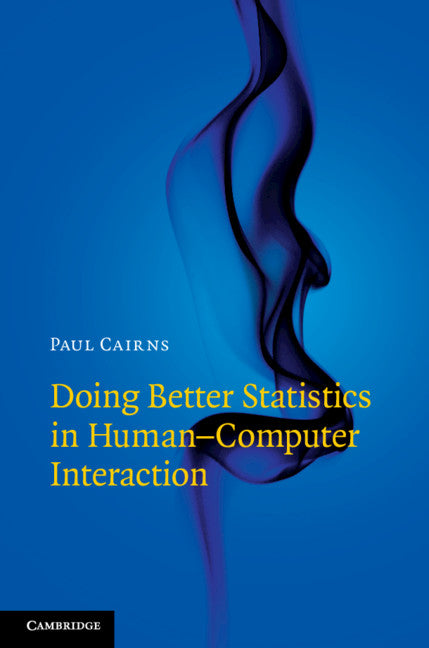Freshly Printed - allow 4 days lead
Couldn't load pickup availability
Doing Better Statistics in Human-Computer Interaction
This book addresses common questions from HCI researchers when trying to do statistical analysis on their data.
Paul Cairns (Author)
9781108482523, Cambridge University Press
Hardback, published 7 February 2019
250 pages, 29 b/w illus. 7 tables
23.5 x 15.6 x 1.6 cm, 0.48 kg
'This is a must-read for novice or well-established researchers alike, who are worried about whether they are conducting the correct statistical analyses of their data. Paul Cairns makes learning about statistics seem both fun and interesting. I'm confident that this book will positively impact the quality of future Human-Computer Interaction research.' Anna L. Cox, University College London Interaction Centre
Each chapter of this book covers specific topics in statistical analysis, such as robust alternatives to t-tests or how to develop a questionnaire. They also address particular questions on these topics, which are commonly asked by human-computer interaction (HCI) researchers when planning or completing the analysis of their data. The book presents the current best practice in statistics, drawing on the state-of-the-art literature that is rarely presented in HCI. This is achieved by providing strong arguments that support good statistical analysis without relying on mathematical explanations. It additionally offers some philosophical underpinnings for statistics, so that readers can see how statistics fit with experimental design and the fundamental goal of discovering new HCI knowledge.
Getting started
Part I. Why We Use Statistics: 1. How statistics support science
2. Testing the null
3. Constraining Bayes
4. Effects: what tests test
Part II. How To Use Statistics: 5. Planning your statistical analysis
6. A cautionary tail: why you should not do a one-tailed test
7. Is this normal?
8. Sorting out outliers
9. Power and two types of error
10. Using nonparametric tests
11. A robust t-test
12. The ANOVA family and friends
13. Exploring, over-testing and fishing
14. When is a correlation not a correlation?
15. What makes a good Likert item?
16. The meaning of factors
17. Unreliable reliability: the problem of Cronbach's alpha
18. Tests for questionnaires.
Subject Areas: Data mining [UNF], Databases [UN], Research methods: general [GPS], Data analysis: general [GPH], Cybernetics & systems theory [GPFC], Reference, information & interdisciplinary subjects [G], Computational linguistics [CFX]


